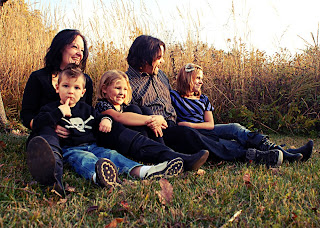Wednesday, November 30, 2011
Going macro
Sunday, November 27, 2011
Give your images a distressed, grungy look in Photoshop.
Today I am going to show you how to add that cool, dirty, grungy, industrial look to your images. This technique can be used on vector work as well as photography. As always, keep in mind that every image has different tonal values, and therefore, will react differently based on said values.
Step one is to open up your image in Photoshop and do all of the basic editing that you would normally do. I prefer to convert my overlay projects to black and white, especially when I intend to give it the industrial touch. However, have fun and experiment with color images to see what kind of results are possible. I will be using an image I took of an old iron machine that is in the ghost town of Bodie, CA.
Step two is to add a grunge texture. Just Google "grunge textures" and find one that strikes you. I like metal or concrete based textures. For this tutorial, I used this one.
A good practice is to create a folder titled "textures" and save your overlays for future use. Save from the net and take your own. You will be surprised on how quickly your skills in photography and Photoshop will improve by gathering your own textures. Tip: When searching for textures online, be sure to click "large" in the options for best results. Once you save the texture, go to File > Place , in Photoshop, and select the texture.
You may have to resize the texture to fit your image. Hit enter when you have it in place. Now go to Layers > Rasterize > Smart Object. This will make your overlay completely editable.
Your layers palette should now look like this.
If you cannot see the layers palette, go to Window > Layers.
Next, desaturate your overlay texture by going to Image > Adjustmets > Desaturate.
So the final step is easy. With the texture layer selected, use the drop down menu in the layers palette and change it to overlay. This layer style usually gives the best results.
Here is the effect on this particular image.
But wait! This does not look like the image at the top of the article. That is because I wanted an even more extreme look. In the layers palette, I chose Linear Burn instead of Overlay for the layer style. This made the image too dark. I merely went to Image > Adjustments > Levels, and boosted the highlights. I copied the original before doing so just in case I changed my mind later. You can also go to the half black, half white circle at the bottom of the layers palette and add a non destructive levels adjustment layer. Just be sure to chose the original image layer before you make the adjustment. By doing so, your adjustment will only effect the image below it.
There you have it. You can play around with the layers styles for different results. Start with Overlay and experiment from there. You can apply this to portraits as well as still lifes and graphics. Take it a step further by flattening your layers and applying a dodge and burn to add contrast. Enjoy!
Saturday, November 26, 2011
How to cross process an image in Photoshop to give it a retro effect.

Here is a relatively quick way to give your photos a cool retro feel using Photoshop curves. This method is referred to as cross processing and you will soon see why. It can be achieved by using a single image, and only takes a couple of minutes once your initial edits are completed.
First, prepare your photo as you usually would. I crop to desired size, touch up any rough spots, adjust levels, and then sharpen. If you are not familiar with developing your photos, there are many tutorials on how to do so. I recommend getting The Adobe Photoshop CS5 Book for Digital Photographers (Voices That Matter) by Scott Kelby
Next, add a curves adjustment layer from the layers panel. (the half black half white circle at the bottom of the layers panel) Adding an adjustment layer as opposed to going to Image > Adjustments > Curves is a preferred method because it is non-destructive. That is, you can go back and tweek the effect, or remove it all together if you want.
Once the Curves dialog opens, select the red channel by using the drop down menu.
You are going to add two points on the line as pictured, making an "s" curve by dropping the shadows and raising the highlights.
Do the same to the green channel.
Lastly, adjust the blue channel, but make the "S" curve opposite of how you did the red and green by raising the shadows and lowering the highlights.
Switch the drop down menu back to RGB and you should see a similar image.
Check out the before and after results.
Keep in mind that this effect does not work the same on every photo. For best results, stay away from darker exposed images. Also, play around with your "S" curves, as results differ based on tonal range of individual images and how extreme your adjustments are. Enjoy!!



















